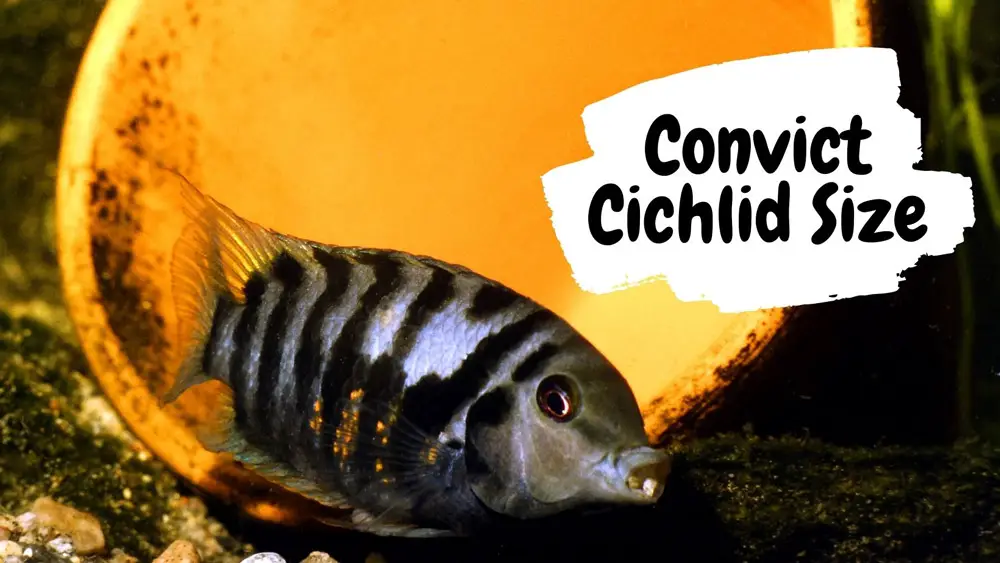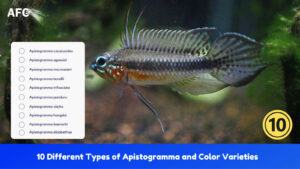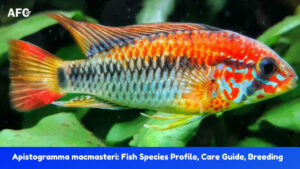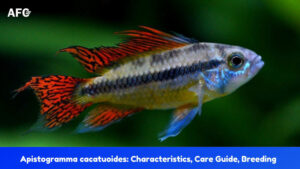The name Convict cichlid comes from the darkish vertical bands, which give the fish a standard “jailbird” look. If you are a convict cichlid pet lover, you should better know the tips on how to ensure their health and foods to feed them for fast growth.
Convict Cichlids interested me a lot since my friend gifted them to me, and I love their great coloring, not to mention they are cheap. So, let us discuss how to successfully keep and breed the Convict cichlid in your aquarium according to their sizes. First, let us know how big do convict cichlids get – the average convict cichlid size.
Convict Cichlid Size: How Big do Convict Cichlids Get?
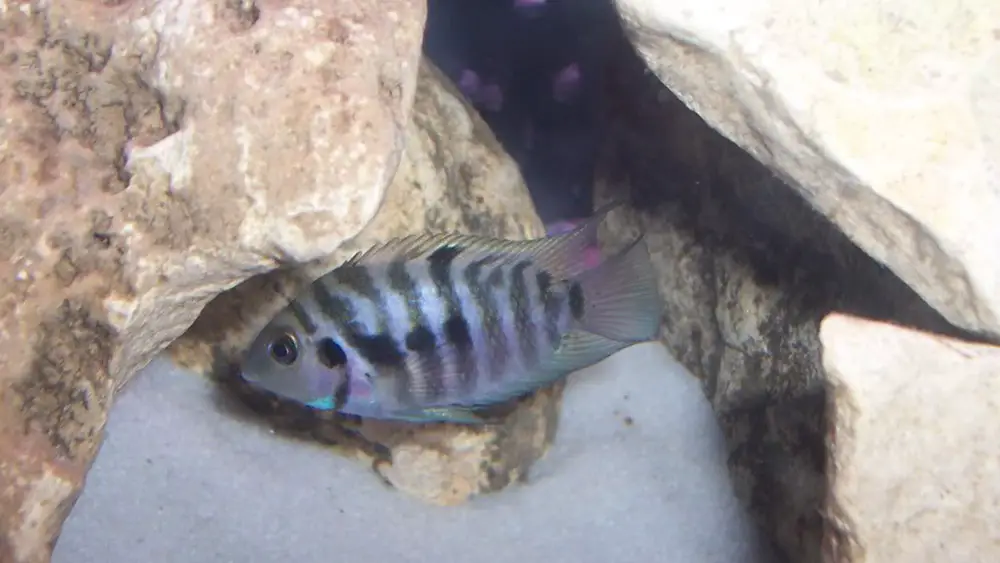
The convict cichlid is one of the smaller CA cichlid species. The males can grow up to 6 inches (15cm), while the females can grow to an average of 4 inches (10 cm). They have a deep body, which makes their sizes easy to underestimate.
The males will grow bigger than females, but the females have unique colors. Due to their size and aggressive nature, you should keep them with similarly sized or larger fish in a very large tank. For beginners, I strongly recommend keeping them in a species only tank.
The breeding pair is generally extremely aggressive when mating. They will kill anything that gets in their way. I have seen them take on larger Oscars 3 times larger than themselves!
How Fast do Convict Cichlids Grow?
When it comes to the growth rate of convict cichlids, you can expect your fish to take around 2-3 years to reach their average size, depending on how you care for them.
Like most cichlids, the environmental quality of their habitat determines how fast they grow and their overall health.
The life span of a convict cichlid is 10 years. Make sure you get your young ones off to the best start in order for them to have long, healthy lives!
How Fast Do Baby Convict Cichlids Grow?
Compared with larger Central American cichlids that generally grow faster during the first few months- up to an inch per month, the baby convict cichlids grow pretty slow. As mentioned early, it takes about 2 years for a convict to reach 4-5 inches at maturity.
How to Make Convict Cichlids Grow Faster?
The convict cichlid is fairly easy to take care of, making it a beginner-friendly fish. Maintaining the correct water situations, creating the proper environment, and feeding your convict cichlid are simple, easy duties.
Here are some additional tips that you should follow to make your convict cichlids grow faster.
Maintain Water Quality
To keep your convicts happy and healthy, replacing at least 15- 20% of the tank water every week is important. This way, they can adjust themselves accordingly without any stress from pollution or pH stability in their environment, especially if your tank is densely stocked.
I advise using a gravel cleaner to remove all the decomposing organic matter built up. A healthy environment is essential for your convict cichlid to reach her full potential and live as long as possible.
Offer a Balanced Diet
The convict cichlid is an omnivore fish that will eat just about anything. The convicts’ food plan consists of assorted sources together with crustaceans, small fish, insects, worms, vegetation, and algae in the wild.
A balanced diet is recommended to encourage your convicts to grow faster. Feed your fish with high-quality food, including commercial omnivorous cichlid food, veggies with spirulina, mixed in beef heart, or even worms as a treat.
Don’t overfeed! You should feed 2-5 small pinches of food a day instead of one large serving. Once your convict cichlid reaches maturity, feed him only once a day to keep him in prime health.
The Omega One Freeze Dried Bloodworms should give her all the nutrients and color enhancers she needs.
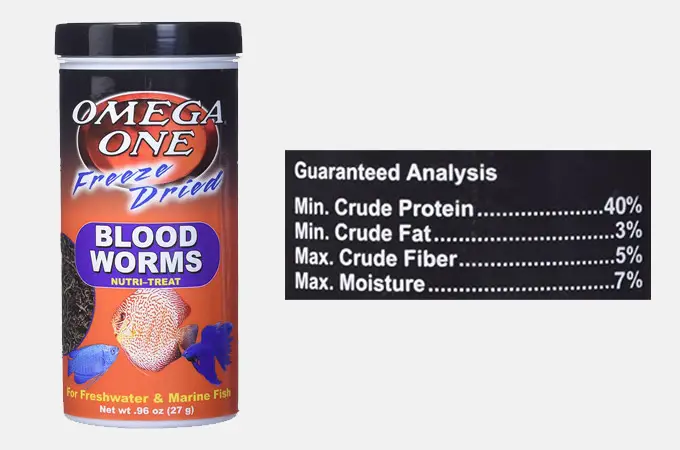
Manage Stress and Illness
When it comes to growth rate, stress and illness can really affect the way that your fish grows and feels. On the other hand, cichlids are susceptible to fungal infections, especially when they’re stressed or have had injuries in the past.
Rule number one to reduce stress is keeping their living conditions are fairly consistent, with no sudden changes. A major water change or temperature fluctuation from a heater failing can lead to an immense amount of stress for your convict cichlid.
The most common disease seen in a convict cichlid aquarium is ich, which can be treated by increasing the tank temperature to 86° F (30° C) for 2-3 days. Try to use many over-the-counter medications for ich during the severe stages of the disease.
Give Him Room
Convict cichlids are most comfortable when providing them with a large aquarium with plenty of areas. You can hold two juvenile specimens in a 20-gallon tank, though you will want to improve the setup to something bigger (55 gallons or more) once the fish turn out to be fully grown.
A Sandy Substrate with Rocks
As one of the cave spawners, the convict Cichlid will feel at home in an environment with a sandy substrate, rocks, and driftwood.
They will then clean an area and dig a depression in the substrate around rocks, flowers pots, or caves when they are breeding.
When you set up an aquarium, be sure that planted plants are anchored to the bottom of your tank, so they don’t fall off. The fish sometimes likes removing gravel and substrate and re-arranging your tank.
Follow these tips to ensure that your fish will grow faster. It is every fish keeper’s goal, after all. So, again, give him room to grow, maintain water quality, and help manage stress and illness, to name some.
Final Thoughts
When you bring home a convict cichlid, your little friend will be sure to keep surprising and delighting you with their ongoing developments. They may take months or even years of patience before they finally come out into the world at large – but this journey is always worth taking!
I hope this article gives you the information that you are looking for about convict cichlids. So, if you want to keep this fish, go ahead. It is good to keep because it is beginner-friendly and not hard to maintain.
Stay tuned for our next blogs in fish keeping. If you liked this post, share it on social media today!
